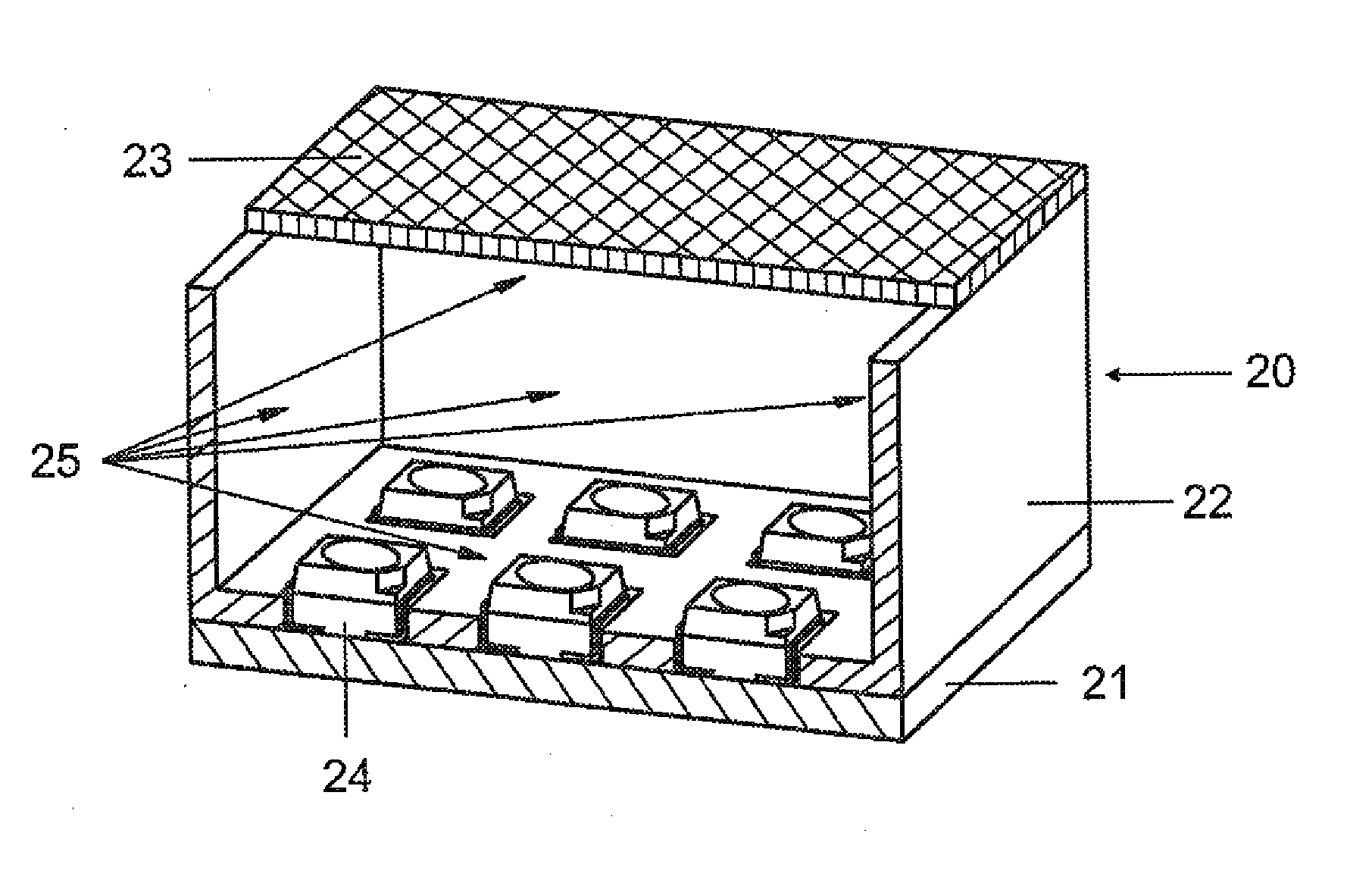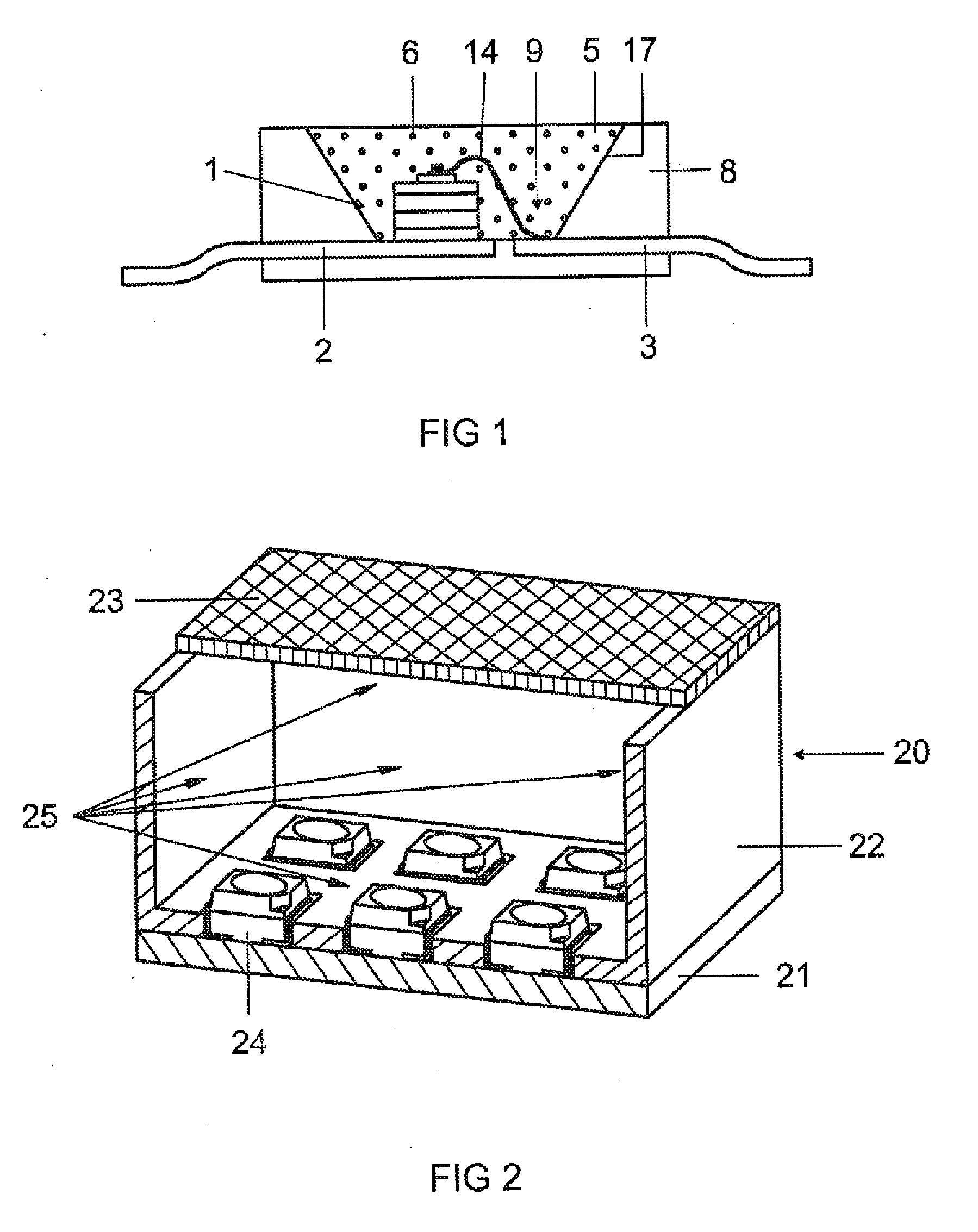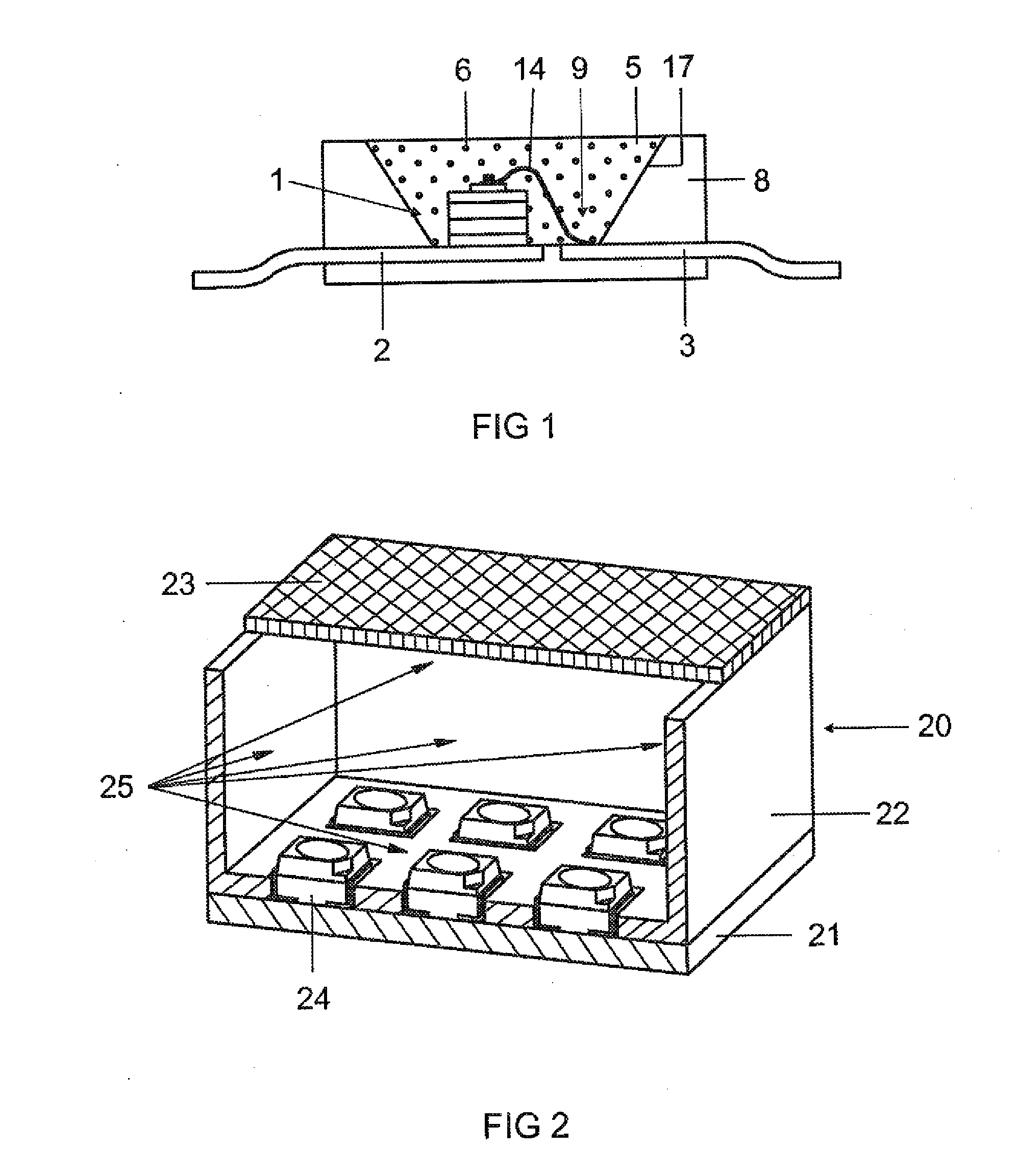Method for Coating a Silicate Flourescent Substance
a technology of flourescent substance and silicate phosphor, which is applied in the direction of luminescent compositions, coatings, chemistry apparatus and processes, etc., can solve the problems of adversely affecting the conversion efficiency in the green spectral range and therefore the chromaticity coordinate, inadequate chemical stability of (nitrido-)orthosilicate phosphors, and inability to resist external chemical influences. , to achieve the effect of preventing chemical attack, avoiding detrimental effects
- Summary
- Abstract
- Description
- Claims
- Application Information
AI Technical Summary
Benefits of technology
Problems solved by technology
Method used
Image
Examples
Embodiment Construction
[0016]For use in a white LED in conjunction with a GaInN chip, a design similar to that described in U.S. Pat. No. 5,998,925 is typically employed. The design of such light source for white light is explicitly depicted in FIG. 1. The light source is an InGaN type semiconductor component (chip 1) with a peak emission wavelength of 460 nm comprising a first and second electrical lead 2,3, said component being embedded in an optically opaque basic housing 8 in the region of a recess 9. One of the leads 3 is connected to the chip 1 via a bond wire 14. The recess has a wall 17 which is used as a reflector for the blue primary radiation of the chip 1. The recess 9 is filled with an encapsulation material 5 containing silicone resin (70 to 95 wt. %) and phosphor pigments 6 (less than 30 wt. %) as its main constituents. Other small amounts of, among other things, Aerosil are also present. The phosphor pigments are a mixture of a plurality of pigments, here primarily orthosilicates or nitrid...
PUM
| Property | Measurement | Unit |
|---|---|---|
| temperatures | aaaaa | aaaaa |
| temperatures | aaaaa | aaaaa |
| temperature | aaaaa | aaaaa |
Abstract
Description
Claims
Application Information
 Login to View More
Login to View More - R&D
- Intellectual Property
- Life Sciences
- Materials
- Tech Scout
- Unparalleled Data Quality
- Higher Quality Content
- 60% Fewer Hallucinations
Browse by: Latest US Patents, China's latest patents, Technical Efficacy Thesaurus, Application Domain, Technology Topic, Popular Technical Reports.
© 2025 PatSnap. All rights reserved.Legal|Privacy policy|Modern Slavery Act Transparency Statement|Sitemap|About US| Contact US: help@patsnap.com



